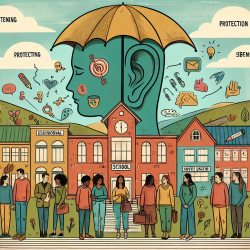Introduction
As a speech-language pathologist, understanding the broader environmental factors that influence social interactions and physical activities can be pivotal in shaping effective therapeutic interventions. The research article titled Associations between Neighborhood Open Space Features and Walking and Social Interaction in Older Adults—A Mixed Methods Study provides valuable insights into how neighborhood open spaces (NOS) can enhance social interaction and physical activity among older adults. This blog explores how practitioners can apply these findings to improve their practice and encourages further research in this area.
Understanding the Research
The study conducted in a low socio-economic neighborhood in Copenhagen focused on the association between NOS features, walking, and social interaction among older adults. The researchers employed a mixed-methods approach, combining interviews and observational tools, to capture both quantitative and qualitative data. Key findings highlighted that well-maintained paths, seating options, and landscaping positively influenced walking, while social interaction was often associated with sedentary behavior.
Implications for Practitioners
For practitioners working with children, these findings underscore the importance of considering environmental factors in therapeutic settings. Here are some actionable steps practitioners can take:
- Incorporate Environmental Assessments: Evaluate the physical environment of therapy settings to ensure they are conducive to both physical activity and social interaction.
- Design Engaging Spaces: Create therapy spaces that encourage movement and interaction, using elements like varied seating and pathways to stimulate activity.
- Promote Social Interaction: Facilitate group activities that encourage socialization, as this can be crucial for language development and social skills.
- Advocate for Community Spaces: Engage with community planners to advocate for NOS that are inclusive and accessible, promoting broader community health benefits.
Encouraging Further Research
The study highlights the need for more research into the specific attributes of NOS that promote both physical and social health. Practitioners are encouraged to collaborate with researchers to explore these aspects further, particularly in diverse socio-economic settings. By contributing to this body of knowledge, practitioners can help shape environments that support optimal developmental outcomes for children.
Conclusion
The insights from the study on NOS provide a valuable framework for practitioners aiming to enhance their therapeutic environments. By integrating these findings into practice, speech-language pathologists can create more effective and engaging interventions that promote both physical activity and social interaction. For those interested in delving deeper into the research, the original study can be accessed here.










